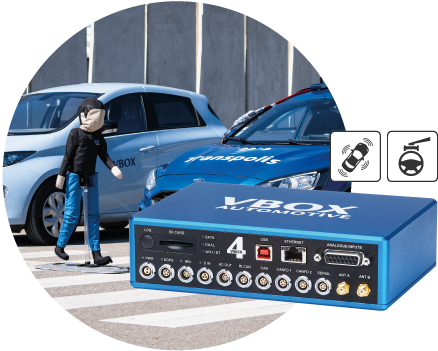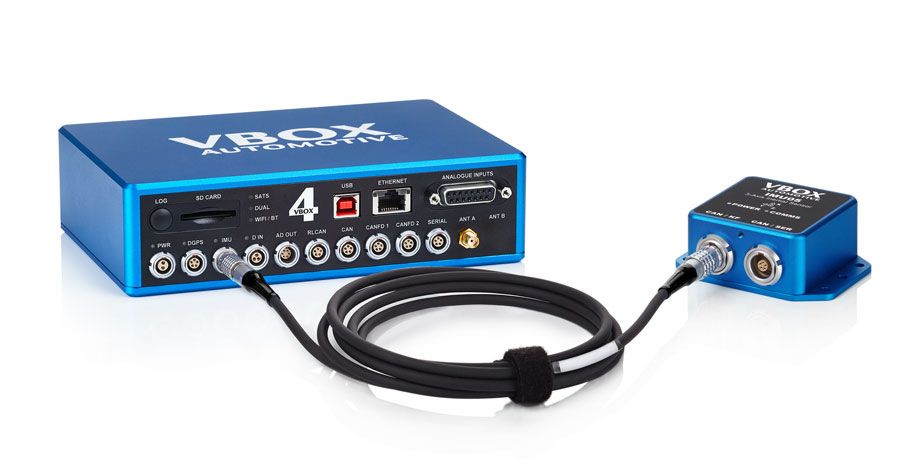VBOX 4
Experience unparalleled versatility and precision in brake testing, ADAS sensor validation, and high dynamic testing.
Resilient Data Capture: 100 Hz multi-constellation GNSS receiver with RTK
Full CAN Bus Logging: Capture the entire vehicle CAN Bus, including CAN FD
IMU Integration: Combine with IMU05 to form Inertial Navigation System
Ethernet Connectivity: Seamlessly integrate with driving robots
Versatile Model Range: Three models, tailored for specific testing applications
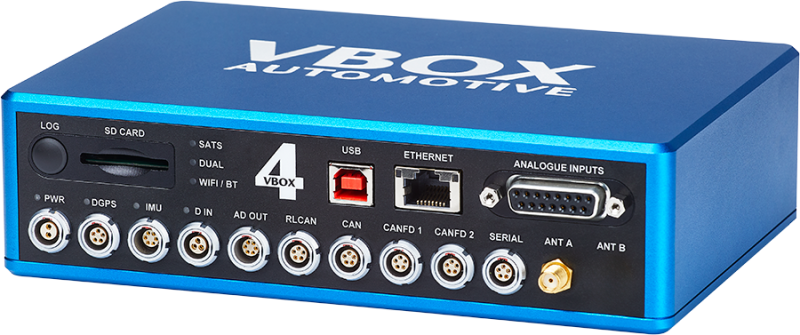
Key Features

RTK as Standard
100 Hz GNSS RTK receiver delivers cm-level accuracy when combined with an NTRIP modem or Base Station.

Full CAN Logging
Take advantage of two dedicated CAN FD ports, an additional CAN Bus and a fourth Bus for Racelogic module input.

Brake Trigger
Capture the precise moment that braking starts, delivering brake stop accuracy to within ±1.8 cm.

Robot Compatibility
Compatible with driving robots from all leading manufacturers including AB Dynamics, Humanetics, VEHICO, Stähle and 4a.
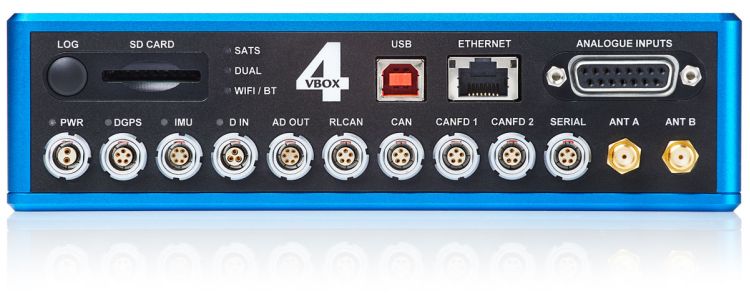

ADAS Testing
VBOX 4 ADAS is engineered for complex ADAS testing that includes up to 5 moving and static targets, 3 road lines and 99 signposts.

IMU Integration
Combines seamlessly with VBOX IMU05 to improve data accuracy in challenging GNSS conditions.

Free Lifetime Support
RACELOGIC provide comprehensive support and software updates at no additional cost for the entire lifetime of your VBOX product.

Easy Configuration
All configuration can be done within the VBOX Setup software, including functionality that was previously only available via the VBOX Manager.
Which VBOX 4 is right for you?
Each VBOX 4 variant is engineered to meet the testing needs of specific applications, from standard brake tests to complex ADAS scenarios including multiple vehicles.
All variants are RTK enabled for centimetre-level accuracy, and all are compatible with the VBOX IMU05 to meet the needs of a wide range of testing requirements.
VBOX 4
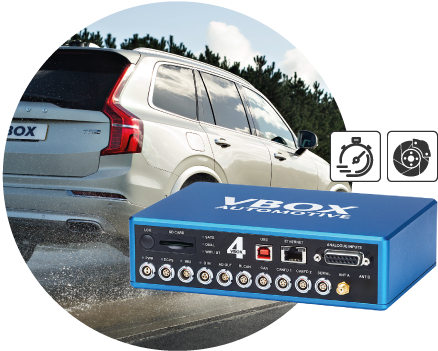
100 Hz GNSS RTK receiver
2x CAN bus, 2x CAN FD ports
±1.8 cm Brake stop accuracy
Ethernet / RS232 / USB / Bluetooth
4 x Analogue inputs
2 x Digital, 2 x Analogue outputs
<1 cm position accuracy with RTK
Pitch and roll angles with IMU integration
VBOX 4 Dynamics
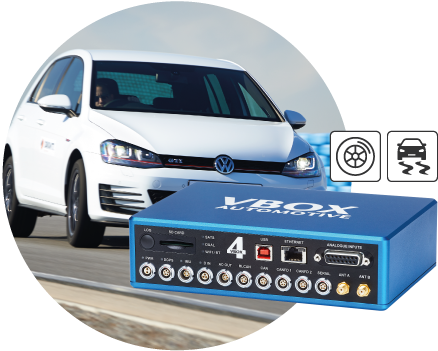
100 Hz GNSS RTK receiver
2x CAN bus, 2x CAN FD ports
±1.8 cm Brake stop accuracy
Ethernet / RS232 / USB / Bluetooth
4 x Analogue inputs
2 x Digital, 2 x Analogue outputs
<1 cm position accuracy with RTK
Pitch and roll angles with IMU integration
Measure slip at up to 5 vehicle locations
Martin Papps, Engineering Director at RACELOGIC, demonstrates the comprehensive CAN logging abilities of VBOX 4.
Full CAN Logging
VBOX 4 automatically captures a vehicle’s entire CAN bus system, including CAN FD, without requiring pre-selection of channels. This ensures that no critical data is missed, eliminating the need for re-testing and allowing complete flexibility in data analysis.
By logging the full CAN Bus upfront, specific channels can be selected later using the VBOX TEST SUITE analysis software. This enables data to be analysed in unlimited combinations, and pre-configured test plugins provide instant pass/fail results.
VBOX 4 features two independent CAN ports, allowing it to synchronise two separate CAN buses into a single .asc file.
Unrestricted CAN bus logging also supports sensors with rapid update rates, such as suspension damper rates. All sensor outputs are precisely synchronised with GNSS position data, ensuring accurate and reliable performance analysis.
IMU Integration
VBOX 4 seamlessly integrates with VBOX IMU05 to enhance data accuracy and reliability. Available in standard and advanced S versions, VBOX IMU05 utilises advanced inertial technology to augment the GNSS capabilities of VBOX 4, delivering cleaner, more precise test data.
Mitigate GNSS Multipath
The combined use of VBOX 4 and IMU05 excels in environments with poor GNSS signals, such as areas prone to signal occlusion, denial, or multi-path interference. Here, the IMU05 consistently maintains data accuracy for speed and position, even when GNSS data is compromised. This means you can reliably test in areas with limited or no satellite coverage, such as tunnels, deep urban canyons and test tracks with heavy tree lining.
Analyse Position and Movement
VBOX IMU05 adds crucial attitude channels - Yaw, Pitch, and Roll - which are essential for vehicle dynamics and ADAS testing to analyse lateral and longitudinal movements, including Slip Angle and Vehicle/Body Heading.
Used as an Inertial Navigation System (INS) the IMU05 will produce pitch and roll angles accurate to 0.02° RMS (0.013° RMS for IMU05-S), yaw angles accurate to 0.1° RMS (0.07° RMS for IMU05-S) and smoother velocity data.
Translate the Reference Point
VBOX IMU05 adds the ability to translate measurements away from the GNSS antenna, to any location on the vehicle, such as the centre of gravity or centre of rotation. This allows for analysis at the point of interest rather than only at the vehicle roof, which experiences measurement overshoot during dynamic manoeuvrers.

Robot Integration
VBOX 4 has RTK, IMU05 compatibility and Ethernet connectivity as standard, supporting seamless integration with all major driving robots.
This enables repeatable and reliable testing for a wide range of test applications from open loop tests such as ESC, to complex path follow scenarios that validate Autonomous Emergency Braking and Lane Support.
Motion Pack Solution
VBOX 4 provides high-precision speed, heading, and positional data, enabling a driving robot to follow a predefined path with centimetre-level accuracy. This ensures tests are conducted with absolute consistency, which is crucial for validating complex ADAS scenarios.
VBOX AUTOMOTIVE offers an extensive range of RTK-compatible devices, modules, displays, radios, and accessories, delivering a complete testing solution for users.
Outstanding Position Accuracy
All VBOX 4 models are RTK-enabled as standard, allowing the use of RTK as a source for correctional data to improve positional accuracy to within 1 cm.
The RTK correction source can either be from a local fixed base station or received over the internet from a third party correction service using NTRIP (Networked Transport of RTCM via Internet Protocol).
Fixed base stations, such as the Racelogic RTK Base station, have a range of up to 10 kilometres (approx 6.2 miles).
NTRIP correction services offer a wide coverage area that is not limited to a particular region, making it the ideal solution for open-road testing. They often require a per-user subscription and some form of internet access.
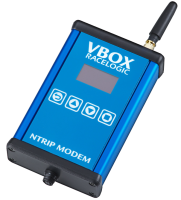
Discover our flexible options to access the Topnet Live GNSS Positioning Correction Service across Europe.
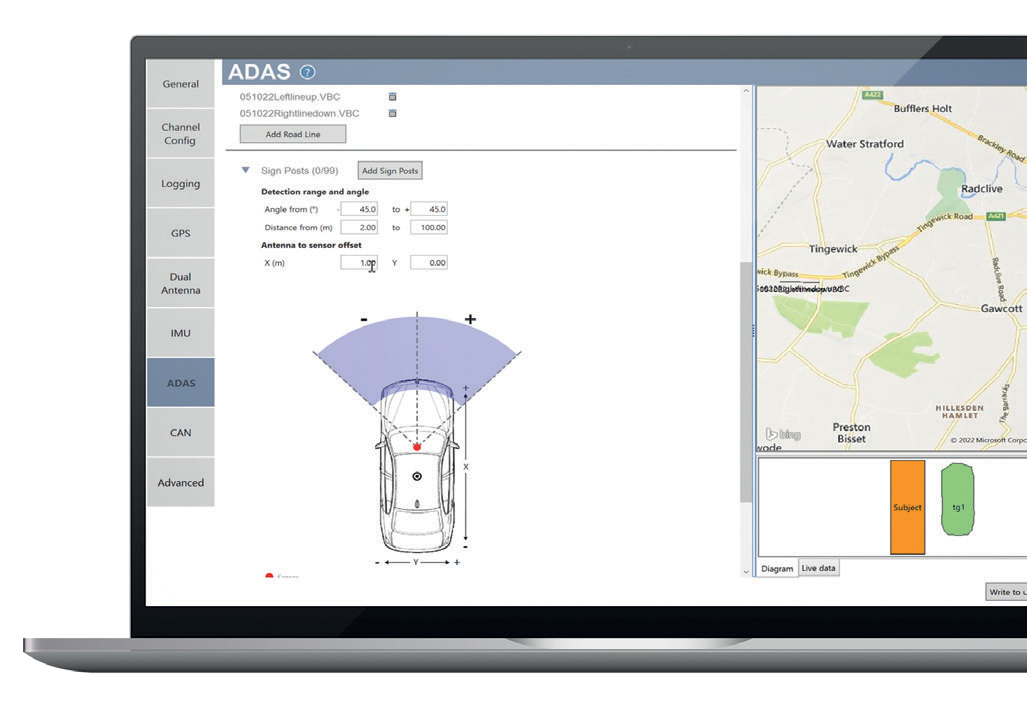
Setup Software
The dedicated set-up software is designed to ensure efficient and seamless configuration of the VBOX 4. The intuitive interface features smart illustrations that visually represent current test settings, providing clarity and reducing setup time.
With active guidance, the software offers real-time feedback, ensuring test setups are constructed correctly and will operate as required. This immediate confirmation minimises errors and enhances testing efficiency.
Add-ons and Accessories
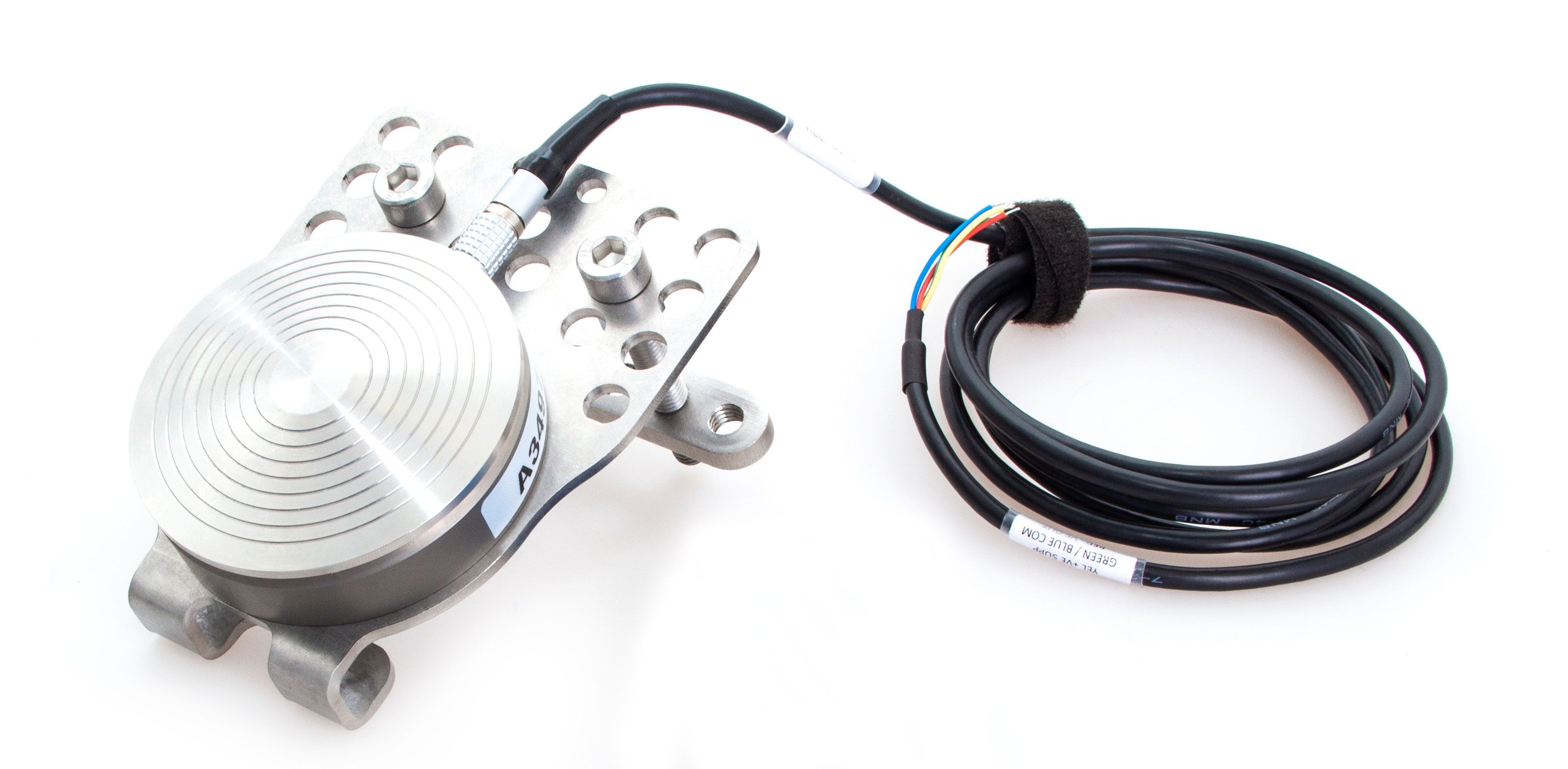
Brake Pedal Force / Trigger
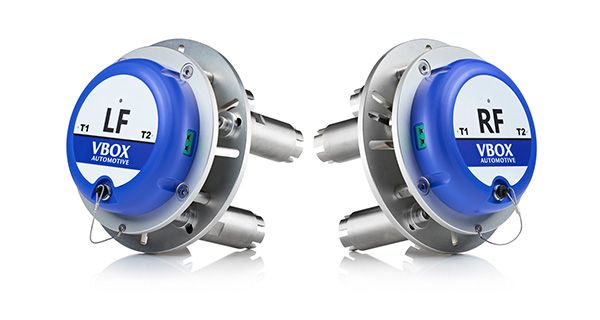
Wheel Speed Sensors
The VBOX Wireless Wheel Speed Sensors deliver precise, real-time 100 Hz wheel speed measurements for a variety of vehicle testing applications.
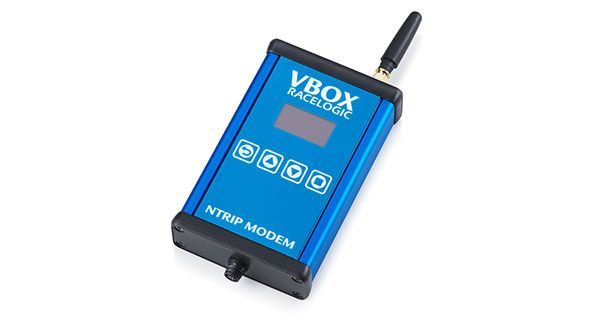
NTRIP Modem
The VBOX NTRIP Modem allows a VBOX 4 to receive positional correction data via Network RTK, without having to use a VBOX Base Station.
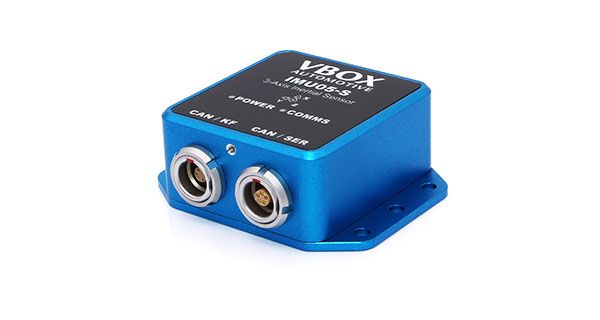
Inertial Measurement Unit
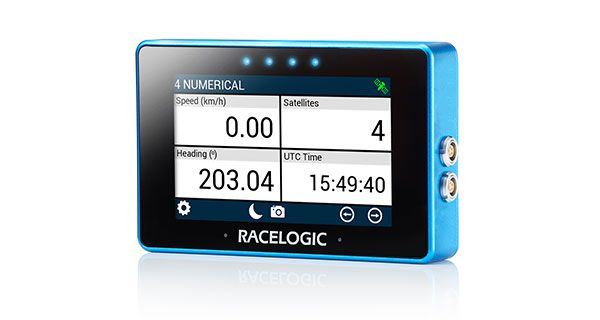
Multi-Function Display
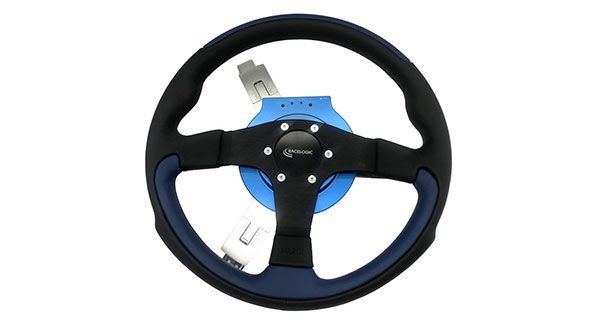
Steering Torque Sensor
Measure steering angle or torque with this easy to install, ISO 17025 calibrated sensor. Available in 50,
100 or 200 Nm models.
Technical Specifications
Position (RMS)
- Accuracy (Standalone)
- V: 1.8 m; H: 1.2 m*
- Accuracy with RTK
- V: 10 mm + 0.8 ppm x baseline*;
H: 5 mm + 0.5 ppm x baseline* - Resolution
- 1.8 mm
Velocity
- Accuracy
- 0.1 km/h
- Resolution
- 0.01 km/h
Distance
- Accuracy
- 0.05 %
eq. to ±1.8 cm braking accuracy - Resolution
- 1 cm
Heading / Timing
- Accuracy
- 0.1° / 0.01 s
- Resolution
- 0.01° / 0.01 s
CAN
- Baud Rate
- Selectable up to 1 Mbit/s
- Termination
- User controlled 120 Ohm
- Output Rate
- 100 Hz
- Output Latency
- 20 ms
CAN FD
- Baud Rate
- Selectable up to 1 Mbit/s
- Data Rate
- Selectable up to 5 Mbit/s
- Termination
- User controlled 120 Ohm
- Max. Capture Rate
- Unlimited
Analogue Input
- Number of Channels
- 4
- Update Rate
- 500 Hz
- Input Range
- ±50 V
- DC Accuracy
- ±2 mV (calibrated at 23°C)
- Channel Sample Order
- Synchronous
Analogue Output
- Voltage Range
- 0-5 V DC
- Update Rate
- 100 Hz
Digital Output
- Frequency
- DC to 44.4 KHz
- Update Rate
- 100 Hz
GNSS
- Signals Tracked
-
GPS: L1, L2
GLONASS: L1, L2 - Update Rate
- 100 Hz
GNSS
- Signals Tracked
-
GPS: L1, L2
GLONASS: L1, L2
Galileo: E1, E5b
BeiDou: B1, B2a
SBAS: L1 - Update Rate
- 100 Hz
Attitude (IMU05)
- Pitch and Roll Angle (RMS)
- 0.02°
- Yaw Angle (RMS)
- 0.1°
- Slip Angle (RMS)
- 0.15°
Attitude (IMU05)
- Pitch and Roll Angle (RMS)
- 0.02°
- Yaw Angle (RMS)
- 0.1°
Attitude (IMU05-S)
- Pitch and Roll Angle (RMS)
- 0.013°
- Yaw Angle (RMS)
- 0.07°
- Slip Angle (RMS)
- 0.1°
Attitude (IMU05-S)
- Pitch and Roll Angle (RMS)
- 0.013°
- Yaw Angle (RMS)
- 0.07°
Dual Antenna
Pitch/Roll Accuracy
- 0.5 m Antenna Separation
- <0.14° rms
- 1 m Antenna Separation
- <0.07° rms
- 1.5 m Antenna Separation
- <0.047° rms
- 2 m Antenna Separation
- <0.035° rms
- 2.5 m Antenna Separation
- <0.028° rms
Dual Antenna
Slip Angle Accuracy
- 0.5 m Antenna Separation
- <0.2° rms
- 1 m Antenna Separation
- <0.1° rms
- 1.5 m Antenna Separation
- <0.067° rms
- 2 m Antenna Separation
- <0.05° rms
- 2.5 m Antenna Separation
- <0.04° rms
*Specifications will vary depending on the number of satellites used, obstructions, satellite geometry (PDOP), multipath effects, and atmospheric conditions. For maximum system accuracy, always follow best practices for GNSS data collection.
How does it work

GPS Accuracy
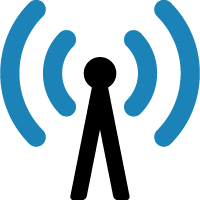
Increased Accuracy with RTK


